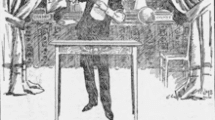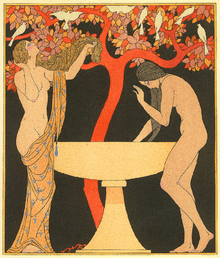Species of hominid in the genus Homo
Humans (Homo sapiens) are the most abundant and widespread species of primate, characterized by bipedalism and exceptional cognitive skills due to a large and complex brain. This has enabled the development of advanced tools, culture, and language. Humans are highly social and tend to live in complex social structures composed of many cooperating and competing groups, from families and kinship networks to political states. Social interactions between humans have established a wide variety of values, social norms, and rituals, which bolster human society. Its intelligence and its desire to understand and influence the environment and to explain and manipulate phenomena have motivated humanity’s development of science, philosophy, mythology, religion, and other fields of study.
Although some scientists equate the term humans with all members of the genus Homo, in common usage, it generally refers to Homo sapiens, the only extant member. Anatomically modern humans emerged around 300,000 years ago in Africa, evolving from Homo heidelbergensis or a similar species and migrating out of Africa, gradually replacing or interbreeding with local populations of archaic humans. For most of history, humans were nomadic hunter-gatherers. Humans began exhibiting behavioral modernity about 160,000–60,000 years ago. The Neolithic Revolution, which began in Southwest Asia around 13,000 years ago (and separately in a few other places), saw the emergence of agriculture and permanent human settlement. As populations became larger and denser, forms of governance developed within and between communities, and a number of civilizations have risen and fallen. Humans have continued to expand, with a global population of over 8 billion as of 2022[update].
Genes and the environment influence human biological variation in visible characteristics, physiology, disease susceptibility, mental abilities, body size, and life span. Though humans vary in many traits (such as genetic predispositions and physical features), any two humans are at least 99% genetically similar. Humans are sexually dimorphic: generally, males have greater body strength and females have a higher body fat percentage. At puberty, humans develop secondary sex characteristics. Females are capable of pregnancy, usually between puberty, at around 12 years, and menopause, around the age of 50.
Humans are omnivorous, capable of consuming a wide variety of plant and animal material, and have used fire and other forms of heat to prepare and cook food since the time of H. erectus. They can survive for up to eight weeks without food and three or four days without water. Humans are generally diurnal, sleeping on average seven to nine hours per day. Childbirth is dangerous, with a high risk of complications and death. Often, both the mother and the father provide care for their children, who are helpless at birth.
Humans have a large and highly developed prefrontal cortex, the region of the brain associated with higher cognition. They are highly intelligent, capable of episodic memory, have flexible facial expressions, self-awareness, and a theory of mind. The human mind is capable of introspection, private thought, imagination, volition, and forming views on existence. This has allowed great technological advancements and complex tool development possible through complex reasoning and the transmission of knowledge to subsequent generations. Language, art, and trade are defining characteristics of humans. Long-distance trade routes might have led to cultural explosions and resource distribution that gave humans an advantage over other similar species.
Etymology and definition
All modern humans are classified into the species Homo sapiens, coined by Carl Linnaeus in his 1735 work Systema Naturae.[2] The generic name “Homo” is a learned 18th-century derivation from Latin homō, which refers to humans of either sex.[3][4] The word human can refer to all members of the Homo genus,[5] although in common usage it generally just refers to Homo sapiens, the only extant species.[6] The name “Homo sapiens” means ‘wise man’ or ‘knowledgeable man’.[7] There is disagreement if certain extinct members of the genus, namely Neanderthals, should be included as a separate species of humans or as a subspecies of H. sapiens.[5]
Human is a loanword of Middle English from Old French humain, ultimately from Latin hūmānus, the adjectival form of homō (‘man’ — in the sense of humankind).[8] The native English term man can refer to the species generally (a synonym for humanity) as well as to human males. It may also refer to individuals of either sex, though this form is less common in contemporary English.[9]
Despite the fact that the word animal is colloquially used as an antonym for human,[10] and contrary to a common biological misconception, humans are animals.[11] The word person is often used interchangeably with human, but philosophical debate exists as to whether personhood applies to all humans or all sentient beings, and further if one can lose personhood (such as by going into a persistent vegetative state).[12]
Evolution
Humans are apes (superfamily Hominoidea).[13] The lineage of apes that eventually gave rise to humans first split from gibbons (family Hylobatidae) and orangutans (genus Pongo), then gorillas (genus Gorilla), and finally, chimpanzees and bonobos (genus Pan). The last split, between the human and chimpanzee–bonobo lineages, took place around 8–4 million years ago, in the late Miocene epoch.[14][15][16] During this split, chromosome 2 was formed from the joining of two other chromosomes, leaving humans with only 23 pairs of chromosomes, compared to 24 for the other apes.[17] Following their split with chimpanzees and bonobos, the hominins diversified into many species and at least two distinct genera. All but one of these lineages—representing the genus Homo and its sole extant species Homo sapiens—are now extinct.[18]
The genus Homo evolved from Australopithecus.[19][20] Though fossils from the transition are scarce, the earliest members of Homo share several key traits with Australopithecus.[21][22] The earliest record of Homo is the 2.8 million-year-old specimen LD 350-1 from Ethiopia, and the earliest named species are Homo habilis and Homo rudolfensis which evolved by 2.3 million years ago.[22] H. erectus (the African variant is sometimes called H. ergaster) evolved 2 million years ago and was the first archaic human species to leave Africa and disperse across Eurasia.[23] H. erectus also was the first to evolve a characteristically human body plan. Homo sapiens emerged in Africa around 300,000 years ago from a species commonly designated as either H. heidelbergensis or H. rhodesiensis, the descendants of H. erectus that remained in Africa.[24] H. sapiens migrated out of the continent, gradually replacing or interbreeding with local populations of archaic humans.[25][26][27] Humans began exhibiting behavioral modernity about 160,000-70,000 years ago,[28] and possibly earlier.[29]
The “out of Africa” migration took place in at least two waves, the first around 130,000 to 100,000 years ago, the second (Southern Dispersal) around 70,000 to 50,000 years ago.[30][31] H. sapiens proceeded to colonize all the continents and larger islands, arriving in Eurasia 60,000 years ago,[32][33] Australia around 65,000 years ago,[34] the Americas around 15,000 years ago, and remote islands such as Hawaii, Easter Island, Madagascar, and New Zealand between the years 300 and 1280 CE.[35][36]
Human evolution was not a simple linear or branched progression but involved interbreeding between related species.[37][38][39] Genomic research has shown that hybridization between substantially diverged lineages was common in human evolution.[40] DNA evidence suggests that several genes of Neanderthal origin are present among all non sub-Saharan African populations, and Neanderthals and other hominins, such as Denisovans, may have contributed up to 6% of their genome to present-day non sub-Saharan African humans.[37][41][42]
Human evolution is characterized by a number of morphological, developmental, physiological, and behavioral changes that have taken place since the split between the last common ancestor of humans and chimpanzees. The most significant of these adaptations are obligate bipedalism, increased brain size and decreased sexual dimorphism (neoteny). The relationship between all these changes is the subject of ongoing debate.[43]
History
Until about 12,000 years ago, all humans lived as hunter-gatherers.[44][45] The Neolithic Revolution (the invention of agriculture) first took place in Southwest Asia and spread through large parts of the Old World over the following millennia.[46] It also occurred independently in Mesoamerica (about 6,000 years ago),[47] China,[48][49] Papua New Guinea,[50] and the Sahel and West Savanna regions of Africa.[51][52][53] Access to food surplus led to the formation of permanent human settlements, the domestication of animals and the use of metal tools for the first time in history. Agriculture and sedentary lifestyle led to the emergence of early civilizations.[54][55][56]
An urban revolution took place in the 4th millennium BCE with the development of city-states, particularly Sumerian cities located in Mesopotamia.[57] It was in these cities that the earliest known form of writing, cuneiform script, appeared around 3000 BCE.[58] Other major civilizations to develop around this time were Ancient Egypt and the Indus Valley Civilization.[59] They eventually traded with each other and invented technology such as wheels, plows and sails.[60][61][62][63] Astronomy and mathematics were also developed and the Great Pyramid of Giza was built.[64][65][66] There is evidence of a severe drought lasting about a hundred years that may have caused the decline of these civilizations,[67] with new ones appearing in the aftermath. Babylonians came to dominate Mesopotamia while others,[68] such as Poverty Point cultures, Minoans and the Shang dynasty, rose to prominence in new areas.[69][70][71] The Bronze Age suddenly collapsed around 1200 BCE, resulting in the disappearance of a number of civilizations and the beginning of the Greek Dark Ages.[72][73] During this period iron started replacing bronze, leading to the Iron Age.[74]
In the 5th century BCE, history started being recorded as a discipline, which provided a much clearer picture of life at the time.[75] Between the 8th and 6th century BCE, Europe entered the classical antiquity age, a period when ancient Greece and ancient Rome flourished.[76][77] Around this time other civilizations also came to prominence. The Maya civilization started to build cities and create complex calendars.[78][79] In Africa, the Kingdom of Aksum overtook the declining Kingdom of Kush and facilitated trade between India and the Mediterranean.[80] In West Asia, the Achaemenid Empire’s system of centralized governance became the precursor to many later empires,[81] while the Gupta Empire in India and the Han dynasty in China have been described as golden ages in their respective regions.[82][83]
Routes taken by barbarian invaders of the Roman Empire during the Migration Period
In Europe, a series of mass migrations of barbarian peoples in the 2nd through 5th Centuries CE, as well as a series of internal struggles, weakened the once-powerful Roman Empire of Classical Antiquity. With an additional series of devastating events during the period known as the End of Antiquity (c. 450-750 CE), which included the fall of the Western Roman Empire (476 CE), the Plague of Justinian (541-549 CE), the apocalyptic Byzantine-Sassanid War (602-628 CE), and the subsequent Rise of Islam, Europe entered the Middle Ages.[84] During this period, Christianity became cemented as the dominant religion of the European sphere. As a result, the Roman Catholic Church coalesced as a centralized source of authority and education to the various medieval states of Western Europe, whereas the Byzantine Empire, the last remaining vestige of the old Roman Empire, with its capital at Constantinople, continued as the preeminent power in the Orthodox East.[85] In the Middle East, Islam became the predominant religion and expanded into North and East Africa, and as far as Central and Southeast Asia. Its spread led to an assimilation of many other cultures and ways of thought, leading to an Islamic Golden Age, which inspired the reexamination and revision of old Greco-Roman and Persian discoveries in philosophy, mathematics, physics, geography, architecture, and technology, and the formation of a distinct way of life.[86][87] The Christian and Islamic worlds clashed many times over the centuries, but most notably during the Crusades. In this era (c. 1095-1350 CE), newly-coalesced Western European powers, including the Kingdom of England, the Kingdom of France, and the German Holy Roman Empire declared a series of holy wars, originally in response to an appeal for help by an assailed Byzantium, to regain control of the Near East and the Holy Land from Muslims.[88] In due time, these Crusades would be commandeered to wage war against fellow Christians and pagan peoples as well. In the Americas, complex Mississippian societies would arise starting around 800 CE,[89] while further south, the Aztecs and Incas would become the dominant powers.[90] The Mongol Empire would conquer much of Eurasia in the 13th and 14th centuries.[91] Over this same time period, the Mali Empire in Africa grew to be the largest empire on the continent, stretching from Senegambia to Ivory Coast.[92] Oceania would see the rise of the Tuʻi Tonga Empire which expanded across many islands in the South Pacific.[93]
The early modern period in Europe and the Near East (c.1450–1800) began with the final defeat of the Byzantine Empire, and the rise of the Ottoman Empire, a powerful state that eventually came to rule over many lands around the Eastern Mediterranean Basin, North Africa, the Levant, and the Balkans,[94] Japan entered the Edo period,[95] the Qing dynasty rose in China[96] and the Mughal Empire ruled much of India.[97] Europe underwent the Renaissance, starting in the 15th century,[98] and the Age of Discovery began with the exploring and colonizing of new regions.[99] This includes the British Empire expanding to become the world’s largest empire[100] and the colonization of the Americas.[101] This expansion led to the Atlantic slave trade[102] and the genocide of Native American peoples.[103] This period also marked the Scientific Revolution, with great advances in mathematics, mechanics, astronomy and physiology.[104]
The late modern period (1800–present) saw the Technological and Industrial Revolution bring such discoveries as imaging technology, major innovations in transport and energy development.[105] The United States of America underwent great change, going from a small group of colonies to one of the global superpowers.[106] The Napoleonic Wars raged through Europe in the early 1800s,[107] Spain lost most of its colonies in the New World,[108] while Europeans continued expansion into Africa—where European control went from 10% to almost 90% in less than 50 years[109]—and Oceania.[110] A tenuous balance of power among European nations collapsed in 1914 with the outbreak of the First World War, one of the deadliest conflicts in history.[111] In the 1930s, a worldwide economic crisis led to the rise of authoritarian regimes and a Second World War, involving almost all of the world’s countries.[112] Following its conclusion in 1945, the Cold War between the USSR and the United States saw a struggle for global influence, including a nuclear arms race and a space race.[113][114] The current Information Age sees the world becoming increasingly globalized and interconnected.[115]
Habitat and population
Population statistics[n 1] 1,000+ million 200–1,000 million 100–200 million 75–100 million 50–75 million 25–50 million 10–25 million 5–10 million





